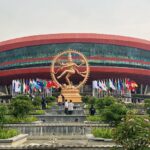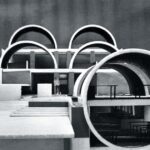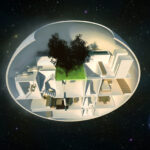About Us
Gautam Bhatia is a Delhi-based architect, writer and artist. A recipient of several awards for his buildings, he has also published books on architecture and satire. His drawings and sculptures have been displayed in galleries in India and abroad.
EDUCATION
B. FA, 1974, George Washington University, Washington DC, USA
M.Arch., 1977, University of Pennsylvania, Philadelphia, Pa. USA
HONOURS
1. Received Ford Foundation grant for Desh Ki Awaaz, a collaborative arts project, 2004
2. Received grant from the Charles Wallace Trust for research on Colonial Architecture at the India Office Library, London,1997
3. Received grants from the Graham and Fulbright Foundations for research on mud architecture at the Aga Khan Program at Harvard University and MIT, 1992
4. Received Ford Foundation Grant for a Documentation of Mud Architecture,1986
5. Awarded 1977 Louis Kahn Fellowship in Architecture, Univ. of Pennsylvania
6. Awarded 1976 Dales Memorial Fellowship for Architectural Study in Europe
7. Awarded First Place Lisner Gallery Art Exhibition, Washington,D.C
ARCHITECTURAL AWARDS
1. 2011 First Prize, National Competition, Secretariat Building, Arunachal Pradesh
2. 2007 Archi-Design Award for Recreational Architecture
3. 2003 A+D National Award for Institutional Building
4. 2003 A+D National Award for Housing
5. 2003 A+D National Award for Hotels
6. Commendation Award 2002 Competition for the Mahatma Gandhi International University, Wardha
7. 2002 JK Architect of the Year Award for Monolith Resorts
8. 2001 Habitat Award, Visual Arts Gallery, Habitat Centre
9. 1999 Inside Outside Designer of the Year Award for Devigarh Palace Hotel, Udaipur
10. 1998 JK Architect of the Year Award for the Children’s Retreat
11. 1994 First Prize Architectural Competition for the CRY-Oxfam Headquarters
12. 1987 First Prize Architectural Competition for Memorial to Mahatma Gandhi
13. 1986 Second Prize Architectural Competition for the Indira Gandhi Centre for Arts
MEDIA/COMMUNICATIONS
1. Guest Editor for Architecture + Design Monograph on the House in India, 1990
2. Guest Editor for Shelter – A supplement to Inside Outside magazine, 1988
3. India Today’s Architect of the Month – Questioning traditional diktats of design, architect Gautam Bhatia goes beyond the ordinary to make sure that his buildings stay true to their surroundings. Read the complete India Today Interview with Mr. Bhatia here .
BOOKS
1. Laurie Baker: Life, Work, and Writings, Viking, 1991
2. Punjabi Baroque, Penguin, 1994
3. Silent Spaces, Penguin, 1995
4. Malaria Dreams, Penguin, 1996
5. Punchtantra, Penguin, 1998
6. A Short History of Everything, Harper Collins, 1998
7. Eternal Stone, Edited, Penguin, 1999
8. A Moment in Architecture, Tulika, 2002
9. Comic Century, Penguin, 2004
10. Whitewash, Viveka Foundation, 2007
11. Lie, A Graphic Novel, Westland Press, 2010
ART EXHIBITIONS/RESEARCH
1. City Fragments, Drawing and Sculpture, Visual Arts Gallery, Habitat Centre, Delhi, 2016
2. Politics as Art, India Art Fair, New Delhi, 2013 and 2014
3. India Art, Group Show, Gallery Art n’ Soul, Mumbai, 2012
4. Desh Ki Awaaz, A Collaborative Arts Exhibit, Triveni Gallery, New Delhi, 2009
5. Nature of the City, Group Show, Religare Gallery, New Delhi, 2008.
6. Indian Art. Group Show, Thomas Erben Gallery, New York, 2006.
7. Around Architecture. Group Show, Gallery SKE, Bangalore 2005.
8. The Good Life? An Exhibition of Drawings, Academy of Fine Arts and Literature, January, 2004
9. Borderless Terrain. Group Show, Visual Arts Gallery, Habitat Centre, September 2002
10. Looking Through Walls: An Exhibition of Drawings, Visual Arts Gallery, Habitat Centre, August 2001
11. Unbuilt India: Curated exhibition on Unbuilt Projects, Vis-à-Vis Design Centre, Delhi 2001
12. Shelter in India: A 2-year research project on Indian house types. Sponsored by HUDCO, 1986
13. Traditional Architecture: A study of mud buildings. Sponsored by the Ford Foundation, 1985
14. The Mud House: Indigenous buildings in the Developing World, London 1992.
15. A Place to Live: Housing Practices Exhibition at Rabindra Bhavan, 1987. Sponsored by HUDCO
WHAT WE DO
Architecture
Professional architecture’s place is usually in an automated brain-wash that cleanses private sins as it emerges, glistening and packaged, on the other side. I chose instead to adopt a private method to this, the most public of professions, and even allow explorations in art and drawing to encroach on building. The foundation of architecture is the loose chain of ideas that come from the invasive, unregulated way of Indian life that is the background in which I live. In designing buildings, I begin by questioning basic norms of space: the home, the apartment, the office, the hotel and other places of daily life. The building begins by first describing individual privacy as its smallest unit, then grows, frame by frame, into something bigger, more complex; its understanding of the forces that shape it are always a discovery, an inevitable testing ground that questions its origin, its links to other buildings and the landscape, its value as a work of architecture. In the long term, the attempt is to analyze architectural ideas, and to examine methods by which places can enlarge the scope of their immediate concern, even inducing contentment over time.
Art
Where thoughts have a visual dimension in art or in tangentially related ideas, they are presented in a loop that includes building, sculpture, painting and drawing. I often use art as just a wider frame of reference for architecture; its tools can be used to discover tangential realities that afflict daily life. Central to sketching, photography, writing and sculpture is the common idea of elaboration, to set out a frame for myself, that includes people, private attitudes, city places and incidents, even politics – all things that occupy architecture. Bits of writings, pencil drawings, fiberglass figures, or molded mud and wax, become a sort of residue of visible matter around me. Like the necessary bits of evidence in a legal battle, they help me build my case in a court where I am the accused, the plaintiff, the jury and judge. It is a sort of personal resonance that a process in on towards some unknown end.
Writing
I am a practicing architect, and my primary connection with the profession is the daily act of designing and constructing buildings. I have always felt though that a profession that doesn’t go by the book deserves writing that doesn’t go by the book. The real life of Indian architecture is the gut-wrenching reality of space contaminated by too many people with too little money and too many ideas of their own – a type whose habits and lifestyles don’t lend themselves to recording mediums like photography. So, much of the writing is about improbable collisions and unlikely alliances. Behind the seemingly ordinary life of an architect lie other less professional impulses that give shape to building ideas. Architecture has a social and anthropological aspect that takes it resolutely away from the drawing board and often lands you in the more familiar strata called life itself. To practice then as a profession, or to write about architecture as a byproduct of design formulae, is not just inaccurate, but a form of professional self-deception. In a country where expectations are always low, there is of course all the more reason to initiate actions that may lead to some gratifying future result. The books are written with optimism and hope – the sort of mutilated sentiment that makes you laugh and cry at the same time.




